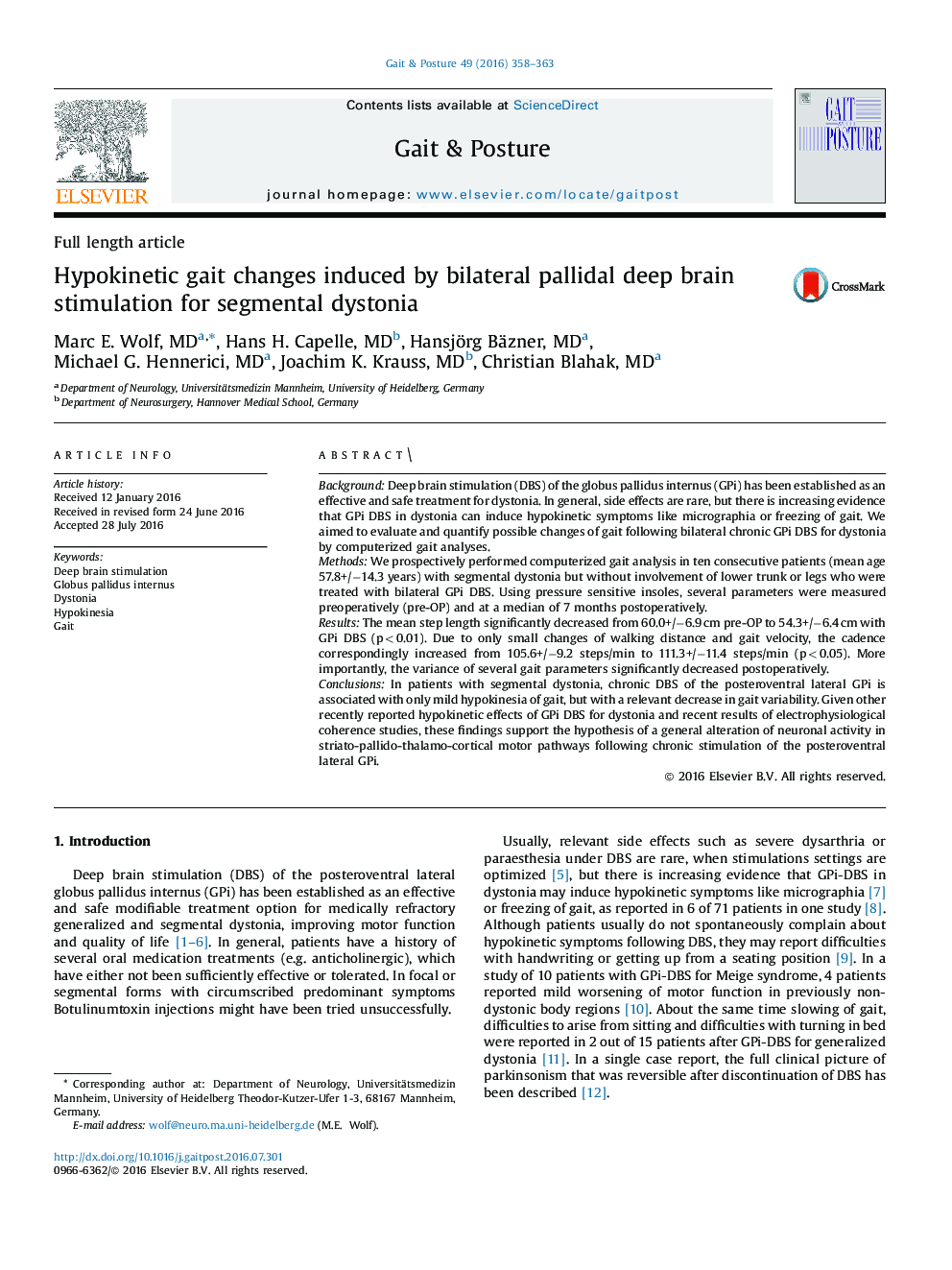| Article ID | Journal | Published Year | Pages | File Type |
|---|---|---|---|---|
| 6205499 | Gait & Posture | 2016 | 6 Pages |
â¢First prospective quantitative evaluation of gait changes after GPi DBS.â¢Finding and detailed description of hypokinetic gait with GPi DBS.â¢New aspect of altered gait variability.
BackgroundDeep brain stimulation (DBS) of the globus pallidus internus (GPi) has been established as an effective and safe treatment for dystonia. In general, side effects are rare, but there is increasing evidence that GPi DBS in dystonia can induce hypokinetic symptoms like micrographia or freezing of gait. We aimed to evaluate and quantify possible changes of gait following bilateral chronic GPi DBS for dystonia by computerized gait analyses.MethodsWe prospectively performed computerized gait analysis in ten consecutive patients (mean age 57.8+/â14.3 years) with segmental dystonia but without involvement of lower trunk or legs who were treated with bilateral GPi DBS. Using pressure sensitive insoles, several parameters were measured preoperatively (pre-OP) and at a median of 7 months postoperatively.ResultsThe mean step length significantly decreased from 60.0+/â6.9 cm pre-OP to 54.3+/â6.4 cm with GPi DBS (p < 0.01). Due to only small changes of walking distance and gait velocity, the cadence correspondingly increased from 105.6+/â9.2 steps/min to 111.3+/â11.4 steps/min (p < 0.05). More importantly, the variance of several gait parameters significantly decreased postoperatively.ConclusionsIn patients with segmental dystonia, chronic DBS of the posteroventral lateral GPi is associated with only mild hypokinesia of gait, but with a relevant decrease in gait variability. Given other recently reported hypokinetic effects of GPi DBS for dystonia and recent results of electrophysiological coherence studies, these findings support the hypothesis of a general alteration of neuronal activity in striato-pallido-thalamo-cortical motor pathways following chronic stimulation of the posteroventral lateral GPi.
